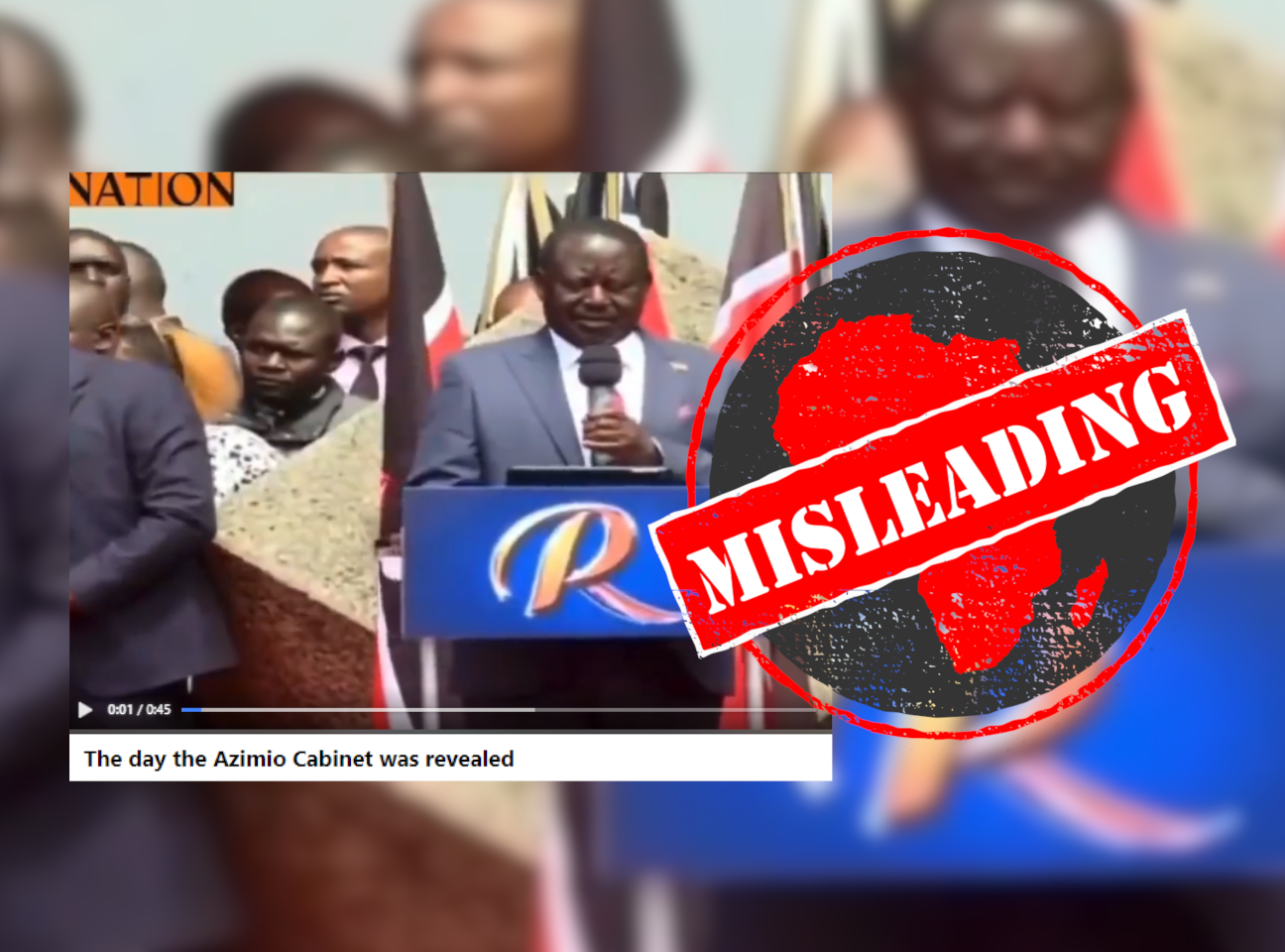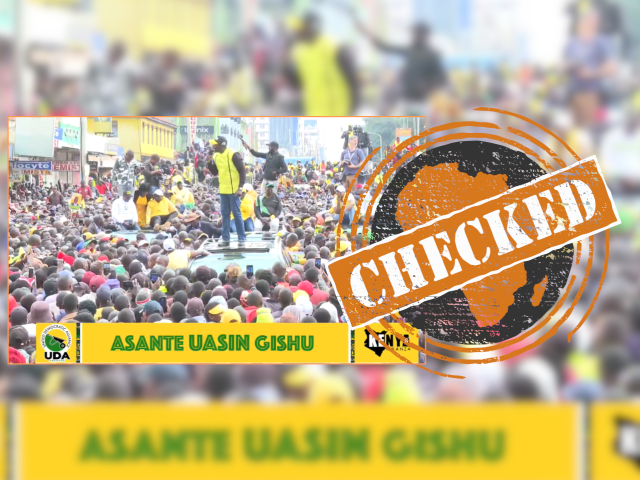IN SHORT: Former Kenyan prime minister Raila Odinga was unlucky with his fifth bid for president in 2022. But he didn’t go ahead and name a cabinet after the supreme court threw out his challenge – a video appearing to show this is old and taken out of context.
“Raila Odinga names his Cabinet Ministers,” reads the caption to a video circulating on Facebook in Kenya.
In the 45-second clip, Odinga is heard naming his cabinet secretaries. He was one of four presidential candidates in Kenya’s August 2022 elections and came in second after winner William Ruto.
The clip started doing the rounds on Facebook after Ruto announced his cabinet on 27 September.
On 15 August the Independent Electoral and Boundaries Commission (IEBC) declared Ruto the president-elect. The IEBC said he received 50.5% of the vote.
Odinga rejected the result and challenged it in court. On 5 September the supreme court unanimously upheld Ruto’s win.
The video clip of Odinga appearing to name his cabinet has been shared here, here, here, here, here, here and here.
Odinga begrudgingly accepted the court’s decision. But did he go on to name ministers he couldn’t legally appoint?

Clip from before August election
We searched the keywords “Raila Odinga announces cabinet” on YouTube. From the results we found the original source of the clip.
It is from a video posted on the YouTube channel of Kenyan television station NTV Kenya on 16 May, some months before the August election. In the longer video, Odinga is seen announcing his cabinet and his running mate Martha Karua.
Odinga announced his proposed cabinet in the hope he would be elected president. It is misleading to suggest the clip shows him naming his ministers after losing the August election.
Republish our content for free
For publishers: what to do if your post is rated false
A fact-checker has rated your Facebook or Instagram post as “false”, “altered”, “partly false” or “missing context”. This could have serious consequences. What do you do?
Click on our guide for the steps you should follow.
Publishers guideAfrica Check teams up with Facebook
Africa Check is a partner in Meta's third-party fact-checking programme to help stop the spread of false information on social media.
The content we rate as “false” will be downgraded on Facebook and Instagram. This means fewer people will see it.
You can also help identify false information on Facebook. This guide explains how.





Add new comment